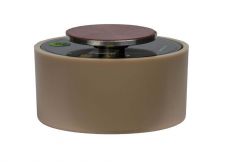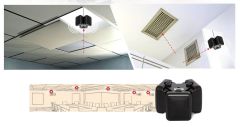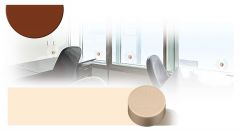DNG-2300 - 3-Channel White Noise Generator
It is well-known that sound permeates through walls, doors, water, windows and other constructions as well as through voids, cavities and ventilation shafts. This property of materials makes it possible to intercept conversations conducted within a premises with the help of highly sensitive contact microphones (electronic stethoscopes), window laser systems or conventional microphones without entering the target area.
Wall contact microphones can pick up vibrations from the plumbing, structures, walls, windows, doors, floors, ceilings and more. The listening device may be in an adjacent room, or even several floors or rooms away attached to a wall, pipe or other fixture. Cavities such as air ducts, ventilation shafts or other voids can be used for intercepting sound from an adjacent premises with a help of conventional microphones.
Window laser systems are able to "read" conversations from the premises by sending visible, or invisible, infrared beams to the glass and extracting the sound vibrations from the reflected rays.
The DNG-2300 generator, together with its transducers and speakers, counteracts all the above mentioned methods of listening by creating powerful, non-filterable interference on the structure of a building and within its voids. While transducers inject their generated noise into surfaces and structures, stopping the distribution of sound through them, the role of a speaker is to fill voids, cavities and ventilation shafts with audio interference to prevent leakage of sound through the air.
Window laser systems are able to "read" conversations from the premises by sending visible, or invisible, infrared beams to the glass and extracting the sound vibrations from the reflected rays.
The DNG-2300 generator, together with its transducers and speakers, counteracts all the above mentioned methods of listening by creating powerful, non-filterable interference on the structure of a building and within its voids. While transducers inject their generated noise into surfaces and structures, stopping the distribution of sound through them, the role of a speaker is to fill voids, cavities and ventilation shafts with audio interference to prevent leakage of sound through the air.
FEATURES
-Creates powerful protection against the leakage of all types of vibro-acoustics by injecting non-filterable noise into surrounding structures and cavities
-Suppresses wall contact microphones, window laser systems and wired microphones inside walls, voids and ventilation shafts (air ducts)
-Is a key part of the protection system which also includes wire-connected transducers and speakers
-Generates white noise – the output interference is evenly distributed through the spectrum of a human's voice
-All 3 channels have individual level adjustment
-Each TRANSDUCERS channel can feed up to 12 transducers mounted on solid structures (concrete/cement/bricks) and up to 24 transducers on light structures (glass, pipes, drywall, wood)
-The SPEAKERS channel can feed up to 12 speakers
-The MUTE control input allows the user to turn off the speakers temporarily
-Suppresses wall contact microphones, window laser systems and wired microphones inside walls, voids and ventilation shafts (air ducts)
-Is a key part of the protection system which also includes wire-connected transducers and speakers
-Generates white noise – the output interference is evenly distributed through the spectrum of a human's voice
-All 3 channels have individual level adjustment
-Each TRANSDUCERS channel can feed up to 12 transducers mounted on solid structures (concrete/cement/bricks) and up to 24 transducers on light structures (glass, pipes, drywall, wood)
-The SPEAKERS channel can feed up to 12 speakers
-The MUTE control input allows the user to turn off the speakers temporarily
| Technical Specifications | ||
| DNG-2300 | ||
| Power source | 110-220V, 50 60Hz | |
| Dimensions | 6×17.5×25.4 cm | |
| Weight | 2.2 Kg | |
| Output channels | 2 x TRANSDUCERS 1 x SPEAKERS |
|
| Peak output voltage | 12V | |
| TRANSDUCERS output (2) | ||
| Max. output power: | 2 × 10W | |
| Frequency response: | 180-5600 Hz | |
| Min. impedance of load: | 3 Ohm | |
| Recommended transducer: | TD2300 | |
| Max. quantity of transducers per channel: | 24 (light structures); 12 (solid structures) | |
| SPEAKERS output | ||
| Max. output power: | 1 x 8W | |
| Frequency response: | 180-7000 Hz | |
| Min. impedance of load: | 8 Ohm | |
| Recommended speaker: | SP2300 | |
| Max. quantity of speakers: | 12 | |
pdf
pdf











